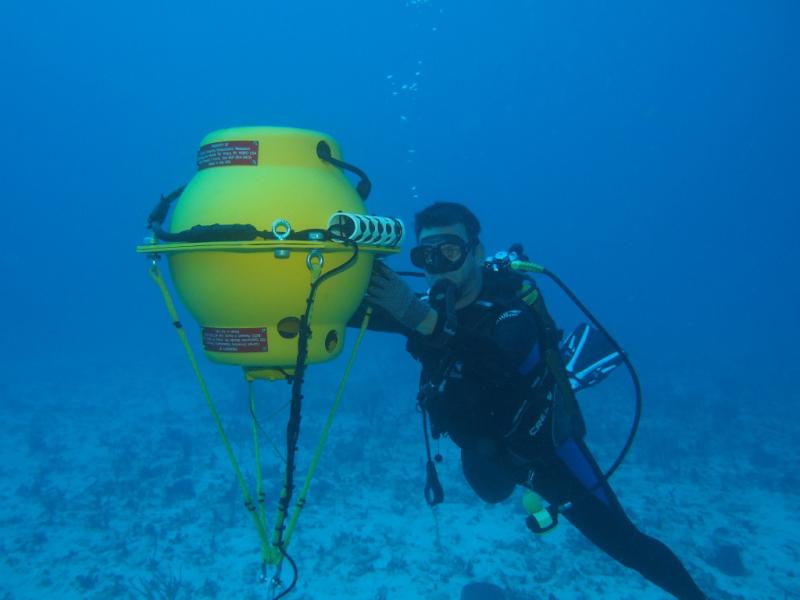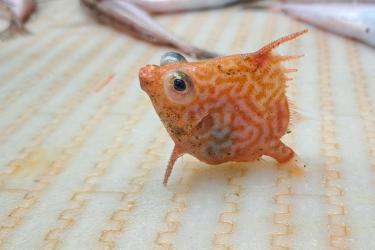NOAA Fisheries and the Bureau of Ocean Energy Management (BOEM) have developed a new framework for monitoring underwater sounds. Published today in Frontiers in Marine Science, the guidelines are designed to help safeguard marine resources as wind energy development expands in U.S. waters.
The framework provides holistic recommendations for offshore wind stakeholders nationwide to effectively monitor and reduce the impact of wind energy projects on marine animals using passive acoustic monitoring.
Why is Passive Acoustic Monitoring Important?
Passive acoustic monitoring in aquatic environments refers to the use of underwater microphones to detect sounds from animals and the environment. These microphones can be deployed for months at a time, run non-stop, and gather data in difficult weather and light conditions. This makes them a great complement to more traditional survey methods. Scientists can also use groups of recorders to track animals as they move throughout an area.
For wind developers, passive acoustic monitoring is a valuable tool. They can use it to identify the animals in a project area and understand how a population is distributed and behaves. They can observe potential behavioral responses to construction activities and turbine operations. Monitoring systems can also be used to make real-time decisions like delaying construction or warning vessels to reduce their speed to protect nearby endangered whales and other animals.
Because of the critical information it provides, NOAA Fisheries and BOEM may require wind developers to use passive acoustic monitoring as part of project-specific permits and approvals. The data collected can be particularly useful in NOAA Fisheries’ work to safeguard protected species under the Endangered Species Act and Marine Mammal Protection Act.
“Passive acoustic monitoring has become an effective and extensively used tool for evaluating the effects of human activities in marine environments,” said Sofie Van Parijs, passive acoustic program lead at the Northeast Fisheries Science Center and lead author of the paper. “As wind energy development expands in U.S. waters, this publication aims to address the need for recommendations and best practices to help industry develop robust and consistent passive acoustic mitigation plans and long-term baseline monitoring programs.”
Recommendations for All Stages of Offshore Wind Projects
The framework outlines minimum procedures, system requirements, and other components for effectively designing and implementing passive acoustic monitoring. Recommendations cover before, during, and after construction of offshore wind projects and apply nationwide.
Guidance for East Coast Projects
In addition to national recommendations, today's publication includes supplements featuring example uses of the framework. These are tailored to understanding and minimizing the impacts of offshore wind development on endangered whales and other marine mammals along the East Coast.
The first supplement highlights a proposed passive acoustic regional monitoring plan. Stakeholders can use this as a guide for collecting systematic baseline data. It can also help users determine whether there are large-scale, long-term shifts in where baleen whales are found—either from human activities like offshore wind development or a changing climate.
The second supplement outlines key considerations for wind developers who are required to create a passive acoustic monitoring plan. It will help them detect animals during construction and operation and inform decisions that reduce effects to them. It will also allow developers to alert nearby vessels to reduce their speed for risk of a vessel strike.
A third supplement provides templates for standardized data sheets for submitting acoustic detection data, supporting metadata, and GPS location data. Wind developers along the East Coast who use passive acoustic monitoring are required to submit these data sheets for each marine mammal detection.



